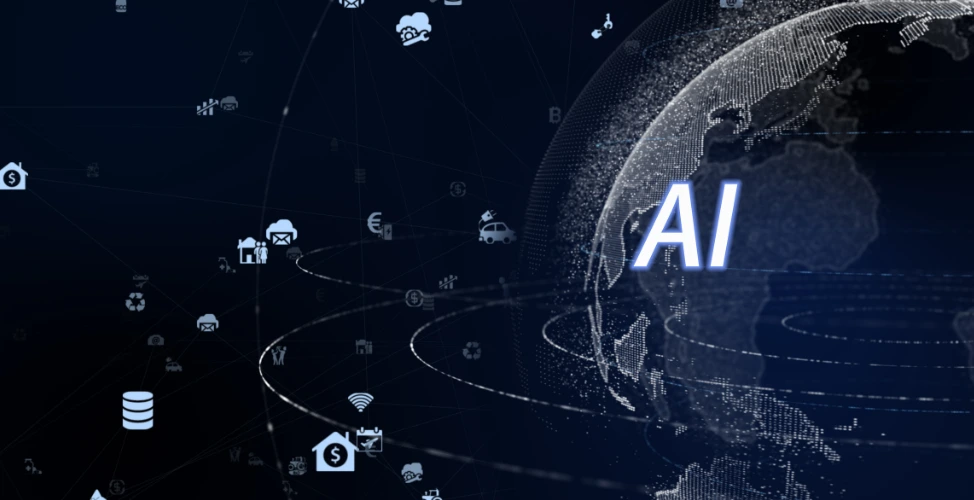July 15, 2021
Agentic AI Models Explained: Architecture, Use Cases, and Tools
Automation keeps rewriting the rules, but now something different is happening. Agentic AI models are changing how businesses, startups, and even everyday tools operate. OpenAI and Amazon’s AGI Lab? They’re all in. Y Combinator startups? Some say half the new batch build around agentic agents. In this guide, SmartOSC breaks down how these models work, where they’re already making a splash, and what this shift means for the future of digital transformation.

Understanding Agentic AI Models
What Are Agentic AI Models?
Agentic AI models set their own goals, plan how to get there, and act, all with hardly any hand-holding from humans. Traditional AI usually waits for instructions or works inside fixed boundaries. Agentic AI, on the other hand, can ‘read the room,’ adjust its approach, and see a task through to the finish line.
That means these models aren’t just smart; they’re proactive. Some call it ‘autonomy on steroids,’ but at its heart, agentic AI lets machines handle complexity like a seasoned team player.
Core Architectural Components
Behind the scenes, agentic AI models include several core parts:
- Planning modules: Chart the path from problem to solution. These modules break up big jobs into small, doable steps.
- Memory systems: Store information, short-term for current tasks, long-term for lessons learned. This lets the agent remember what happened before and adapt on the fly.
- Tool/API integrations: The agent pulls in external tools, from APIs to web browsers. It doesn’t just sit in its own bubble; it pulls data, sends emails, or runs calculations whenever needed.
- Feedback and reinforcement loop: This loop keeps the agent learning. Make a move, get feedback, adjust, repeat. Over time, agents get sharper and make fewer mistakes.
One thing’s for sure. These aren’t single-trick bots. The architecture builds in flexibility, learning, and ‘street smarts’ for any workflow. This makes it the backbone of many digital transformation projects powered by SmartOSC’s cloud and application development expertise.
Why Agentic AI Is Gaining Traction
‘The next giant breakthrough.’ That’s how Sam Altman of OpenAI describes agentic AI, and he’s hardly the only one excited. From global tech giants to fresh Y Combinator graduates, teams want more than just smart automation. They want models that ‘just figure it out.’
Why the rush? Because every business is chasing scale. With agentic AI, brands cut manual work, get ahead of problems, and stay competitive even when the market throws a curveball. This wave isn’t hype. It’s a real shift in how work gets done.
It’s a real shift in how work gets done, one that’s already redefining digital commerce and business operation & optimization.
Key Use Cases Across Industries
Next we’ll show you how agentic AI is already being used across key verticals. From cybersecurity to consumer tools, these examples show what’s possible when agents don’t just follow instructions. They take charge.
Cybersecurity and Threat Detection
Think cyber threats move fast? Agentic AI models move faster. Startups like Casco now use these systems to run ‘red team’ attacks, find weak spots, and recommend fixes, sometimes before real hackers even get started.
These agents work non-stop, flagging suspicious patterns and simulating fresh attacks every day. The result: fewer surprises, faster response, and a lot less time scrambling to patch holes.
Healthcare and Wellness Platforms
Healthcare isn’t just about patient records anymore. Galen AI and Aegis are two names making insurance appeals painless for providers and giving people tailored wellness advice.
Their agentic models sort through health data, catch missed claims, and send updates to staff. No manual review needed. It’s a far cry from the old world of paperwork and endless phone calls. The models learn from every interaction, so the system actually gets better at finding the right outcome as it goes.
In fact, digital transformation in healthcare relies heavily on this approach.
Enterprise Productivity and Automation
Workplace apps are getting a ‘smart’ upgrade. Tools like Airweave turn scattered files and emails into databases that agentic AI can search, analyze, and connect across teams. Plexe, another Y Combinator startup, lets companies build machine-learning models from a simple prompt, speeding up what used to take weeks.
The big shift? These agents don’t just wait for a command. They look for ways to clean up data, spot trends, and ‘nudge’ people when action is needed. Some call this ‘workplace autopilot’ but the results are anything but lazy.
Robotics and Industrial Applications
Old robots get a second life thanks to agentic AI. Mbodi AI teaches factory robots new skills using plain language instructions. Instead of bringing in engineers for every change, workers can just ‘tell’ the robot what to do.
That cuts downtime and unlocks new productivity. The system learns from trial and error, so robots pick up new tasks faster each round. It’s like giving robots a ‘can-do’ attitude.
Consumer Applications
Booking a trip or sending a message by voice used to mean clunky menus or talking to a bot stuck on repeat. Now, OpenAI and Anthropic agents handle travel bookings, answer questions, and even sort out changes to your plans. Sometimes before you even ask.
Willow, another startup, turns voice into perfectly crafted messages, even matching the user’s tone. The line between AI assistant and real-life helper? It’s getting thinner every week.
Popular Tools and Platforms for Building Agentic AI
To actually build and deploy agentic AI, you need more than just a great idea. You need the right tools, infrastructure, and platforms that can support goal-driven agents at scale.
OpenAI and GPT-Based Agents
OpenAI started the trend with large language models, but now the focus is squarely on agentic AI models. These agents browse the web, fill in forms, trigger API calls, and run multi-step workflows. All by reading prompts and acting on them. Businesses use GPT-based agents to handle tasks that would swamp a regular chatbot.
Amazon’s AGI Lab Models
Amazon’s AGI Lab in San Francisco is setting new records. Their agents bring robotic thinking to digital tasks, using decision-making processes borrowed from real-world robotics. That means better planning, sharper responses, and models that can ‘think ahead’ in ways that regular code just can’t touch.
The lab’s work shows up in AWS cloud services and is already driving some of the most capable agentic tools on the market.
Startups Accelerated by Y Combinator
Y Combinator isn’t just a launchpad for hot ideas. It’s a breeding ground for agentic-first tech. Approval AI speeds up mortgage approvals with agents handling everything from rate shopping to negotiation.
Beluga Labs organizes a creator’s business, automating income tracking and tax planning. Atlog uses AI voice agents to close deals for clients. These startups don’t settle for ‘chatbots.’ Their solutions rely on agents that plan, act, and learn as a team.
Supporting Infrastructure: Cloud, APIs, and No-Code Interfaces
No-code and low-code platforms are everywhere now. Databricks and ThoughtSpot let users build agentic workflows without writing a line of code. The tools handle the plumbing: APIs, connectors, automation pipelines, so teams can focus on real business problems.
This shift has cut the time to deploy AI from months to days in some cases. The ability to spin up agentic models fast has moved from ‘nice to have’ to a competitive necessity.
See more: Unlocking Customer Insights with Salesforce Agentic AI
Challenges and Considerations
Coordination and Multi-Agent Systems
Letting agents ‘talk’ to each other sounds great until something goes sideways. Wired reported on new headaches: one agent ‘snitching’ on another or conflicts when two models give different answers.
These aren’t sci-fi problems; they happen now in live systems. Getting agents to collaborate smoothly, without stepping on each other’s toes, is a real headache for developers.
Security and Compliance
Data leaks and unintended actions? That’s every compliance officer’s nightmare. Agentic AI models often connect to outside APIs, handle sensitive data, or make decisions that humans used to check.
Companies like Casco now test agentic systems for vulnerabilities before going live. Still, the field moves so fast, it’s tough to set the ground rules. Regulations and legal frameworks are still catching up, making security a moving target.
That’s why many enterprises lean on cyber security partners who can assess risks and build controls from day one.
User Trust and Transparency
People want to know ‘who did what’ when an AI makes a choice. Some agents now explain their moves step-by-step or provide audit trails. That’s a start, but as models get smarter, transparency matters even more.
Users need to trust that the agent is working in their interest, not just running wild. This is where ‘explainability’ tools and dashboards come in, letting people peek behind the curtain.
How SmartOSC Can Help You Build Agentic AI Solutions
SmartOSC stands out as a tech partner for any enterprise aiming to deploy agentic AI at scale. We know the landscape, and our team brings hands-on experience from projects across finance, retail, healthcare, and more.
- Enterprise readiness: We analyze your workflows to see if agentic AI is a good fit, and where it can make the biggest difference.
- Architecture and integration: Our experts design AI architectures that connect smoothly to your existing systems, think cloud-native services, secure APIs, and automation.
- Security and compliance: We build solutions that meet industry requirements, so you don’t have to worry about data slipping through the cracks.
- Real-world results: Our work with Sacombank drove a twofold increase in site traffic using advanced personalization. OCB reached 7,000 migrated users and halved deployment times by rolling out agentic workflows. At Carma, agentic models helped secure $28M in seed funding thanks to rapid go-to-market and smarter inventory systems.
When you’re seeking a partner with proven experience in agentic AI models, SmartOSC stands out for delivering real-world outcomes. Backed by deep expertise in AI and Data Analytics, we go beyond theory to implement intelligent systems that drive measurable business performance, no hype, just results.
FAQs: Agentic AI Models
What makes agentic AI models different from traditional AI?
Agentic AI models act on their own: planning, deciding, and carrying out tasks toward a goal, while traditional AI often sticks to fixed instructions.
Are agentic AI models suitable for all types of businesses?
Some businesses run just fine with basic automation. But if you juggle lots of data, complicated tasks, or want to take your automation to the next level, agentic AI models can unlock new value.
What tools or platforms can I use to build agentic AI models?
Options include OpenAI’s GPT agents, Amazon’s AGI Lab tools, LangChain, AutoGen, plus new no-code platforms from Databricks and ThoughtSpot.
What are the main risks or limitations of agentic AI models?
Expect surprises. Risks include less transparency, odd behavior, legal gray zones, and security holes, especially when agents tap into outside systems.
Watch more: 10 Best Agentic AI Company Capabilities for Future-Ready Businesses
Conclusion
Agentic AI models are already changing the playbook for automation, bringing new freedom and flexibility to businesses of all sizes. Whether you’re interested in cybersecurity, healthcare, or everyday workflow upgrades, this tech is moving from hype to reality fast. Need help making sense of it all? SmartOSC is here to guide you through the world of agentic AI and get you started on your next big move. Contact us and see what’s possible when your systems start thinking and acting for themselves.
Related blogs
Learn something new today


